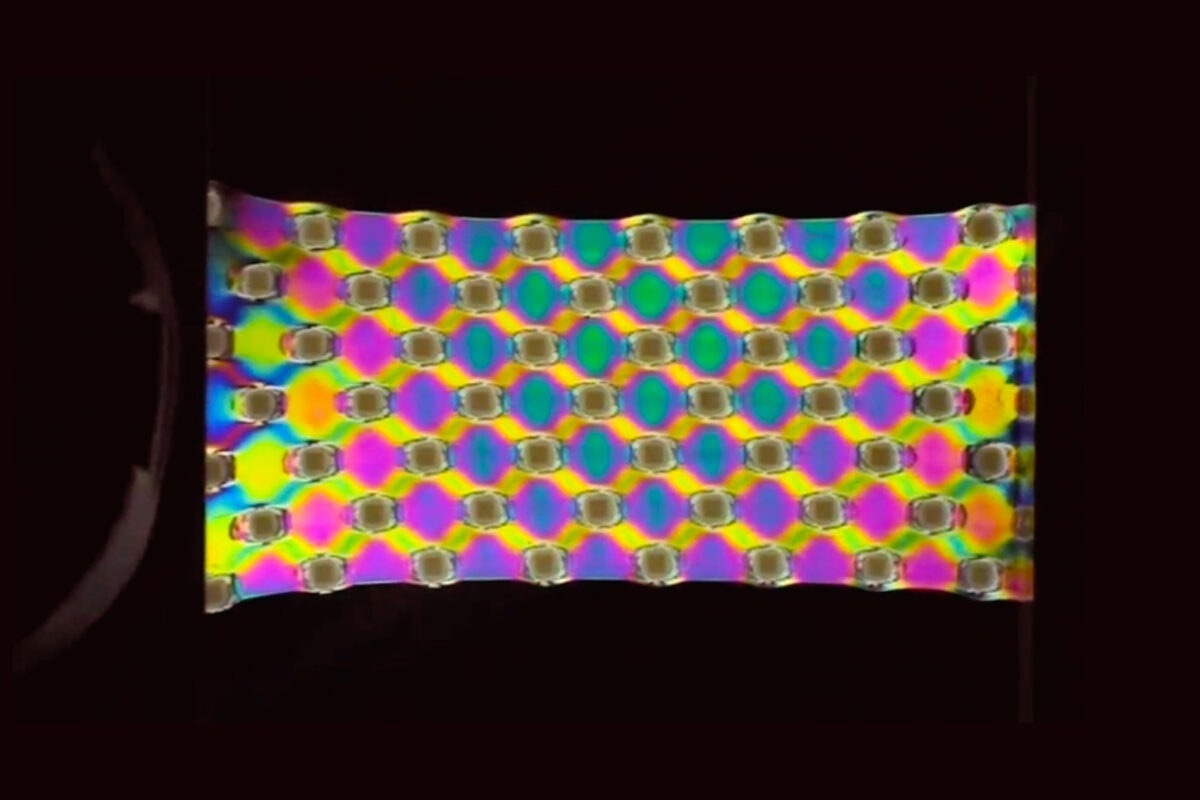Researchers at The University of Texas in Austin set out to make a plastic inspired by living things like trees and shellfish, which posses both soft and hard structural components.

A new plastic-like material developed by researchers at The University of Texas at Austin can be manipulated to be soft and stretchy or hard and rigid with only the application of a catalyst and visible light. Image Credit: The University of Texas at Austin
The team was successful in creating a new material that is 10 times more durable than natural rubber and could result in more flexible electronics and robotics. This achievement was unique, and it involved using only light and a catalyst to change properties like hardness and elasticity in molecules of the same type.
The findings were published in Science on October 13th, 2022.
This is the first material of its type. The ability to control crystallization, and therefore the physical properties of the material, with the application of light is potentially transformative for wearable electronics or actuators in soft robotics.
Zachariah Page, Study Corresponding Author and Assistant Professor, Chemistry, The University of Texas in Austin
For a very long time, scientists have worked to create synthetic materials that imitate the characteristics of living structures like skin and muscle. Often. structures in living things mix qualities like strength and flexibility with ease.
When applying a combination of diverse synthetic materials to simulate these properties, the materials frequently fall short, ripping and disintegrating where the materials meet.
Page added, “Oftentimes, when bringing materials together, particularly if they have very different mechanical properties, they want to come apart.”
By using light to vary how stiff or elastic the material would be, Page and his team could regulate and modify the structure of a material that resembled plastic.
Chemists began with a monomer, a small molecule that joins with other molecules of a similar size to make the building blocks for larger structures known as polymers, which are similar to the polymer found in the most widely used plastic.
After evaluating a dozen catalysts, they discovered one that produced a semicrystalline polymer resembling those in synthetic rubber when combined with their monomer and exposed to visible light. The areas that the light contacted created a tougher and more rigid substance, while the unlit areas kept their soft, elastic characteristics.
The substance was stronger and could be stretched farther than other mixed materials since it was made of a single material with distinct qualities.
The catalyst and monomer are readily available on the market, the reaction occurs at room temperature, and the experiment used low-cost blue LEDs as the light source. The procedure is quick, economical, energy-efficient, and eco-friendly since the reaction uses little hazardous waste and does not take more than an hour.
To further verify the material’s utility, the researchers will next try to create more objects using the material.
We are looking forward to exploring methods of applying this chemistry towards making 3D objects containing both hard and soft components.
Adrian Rylski, Study First Author and Doctoral Student, The University of Texas in Austin
The material could be utilized as a flexible foundation to secure electronic components in medical devices or wearable technology. Robust and flexible materials are preferred to enhance movement and durability in robotics.
The University of Texas at Austin’s Henry L. Cater, Keldy S. Mason, Marshall J. Allen, Anthony J. Arrowood, Benny D. Freeman, and Gabriel E. Sanoja all made contributions to the study.
The National Science Foundation, the US Department of Energy, and the Robert A. Welch Foundation provided funding for the study.
Journal Reference:
Rylski, A. K., et al. (2022) Polymeric multimaterials by photochemical patterning of crystallinity. Science. doi:10.1126/science.add6975.